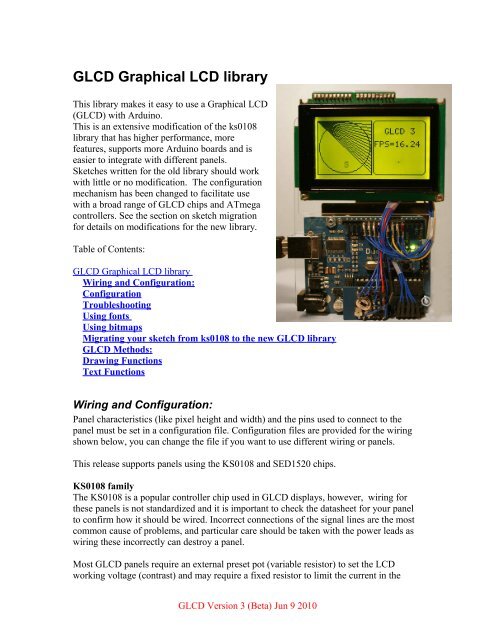
- #Arduino lcd library scroll serial#
- #Arduino lcd library scroll software#
- #Arduino lcd library scroll download#
Lines of text / numbers shown on the display can be interactive. Screens can be looped back and forth, or a specific screen can be specified by its object or number: void LiquidMenu::next_screen() īool LiquidMenu::change_screen(LiquidScreen &liquidScreen)

Menu navigation is done from the LiquidMenu object or, if there are multiple menus, from the LiquidSystem object. LiquidSystem(LiquidMenu &liquidMenu1., byte startingMenu = 1) Accepts 0 to 4 LiquidMenu objects and the number of the menu that will be shown first. LiquidMenu(LiquidCrystal &liquidCrystal, LiquidScreen &liquidScreen1., byte startingScreen = 1) Accepts a reference to a LiquidCrystal object, 0 to 4 LiquidScreen objects, and LiquidLine(byte column, byte row, A &variableA.) This structure can be implemented when the object is created or later using public methods of the classes. And, optionally, LiquidMenu objects are part of the LiquidSystem object. The LiquidScreen objects are then part of the LiquidMenu object (s). The LiquidLine objects are then part of the LiquidScreen objects. First, we have the variables / constants that go into the LiquidLine objects. For example, an expansion board with a display and buttons.
#Arduino lcd library scroll download#
You can download SoftwareSerial library from the official Arduino website.The LiquidMenu library wraps the LiquidCrystal Arduino library with the ability to create menus. If you will use SoftwareSerial as your communication infrastructure, you have to include its header, too. What I did in this library is to convert them into more meaningful functions.Īssuming that you have placed the library files in the libraries folder of your Arduino IDE, you can include the header file in your sketch.

As you see, commands are one-byte values with some parameters.
#Arduino lcd library scroll serial#
You can communicate with this model of serial LCD as here. Actually, there exist a 3-pin connector on the side of the serial LCD. I couldn't find a serial LCD part in the Fritzing editor, so I have used normal LCDs. Sorry for the connections of the LCDs on above images. There is another PCB at the back of the LCD soldered to the LCD's pins. One more thing it is better to use an external power source for your Arduino board because an LCD drains more power than that computer's USB port can provide, or you take the risk of damaging your Arduino board.īe aware that you may need to do some soldering if you decide to buy a serial LCD like mine.
#Arduino lcd library scroll software#
If you will use software serial, the only thing is to decide which digital pin to use as serial transmit. But in that case, I advice you to disconnect Arduino board from your computer, because Serial is used as shared resource for the serial communication between the computer and the board. Pin0 is the receive pin of Serial and Pin1 is for transmit. If you decide to use hardware serial, you will use the digital pin1 of your Arduino board as serial transmit. It is up to you which type of communication to use. This stream can be either hardware serial or software serial. All you need is to connect the Rx (receive) line of the serial LCD to the Tx (transmit) line of the stream on Arduino board. Serial LCD has three lines which are GND, Vcc, and Rx. You command this microprocessor from your Arduino board over a stream and it handles the rest for you. Actually, it uses another microprocessor which drives the LCD. However, a serial LCD eliminates the necessity for so many pins. An LCD needs many pins like data, clock, select, contrast adjustment, etc. If you visit the LiquidCrystal reference page on the Arduino website, you will see that it is based on Hitachi HD44780(or a compatible) chipset. But there are some serial implementations such as here. The main drawback about an LCD is that it occupies too many pins on your Arduino board. Using an LCD is one of the ways to output information in Arduino projects.


 0 kommentar(er)
0 kommentar(er)
